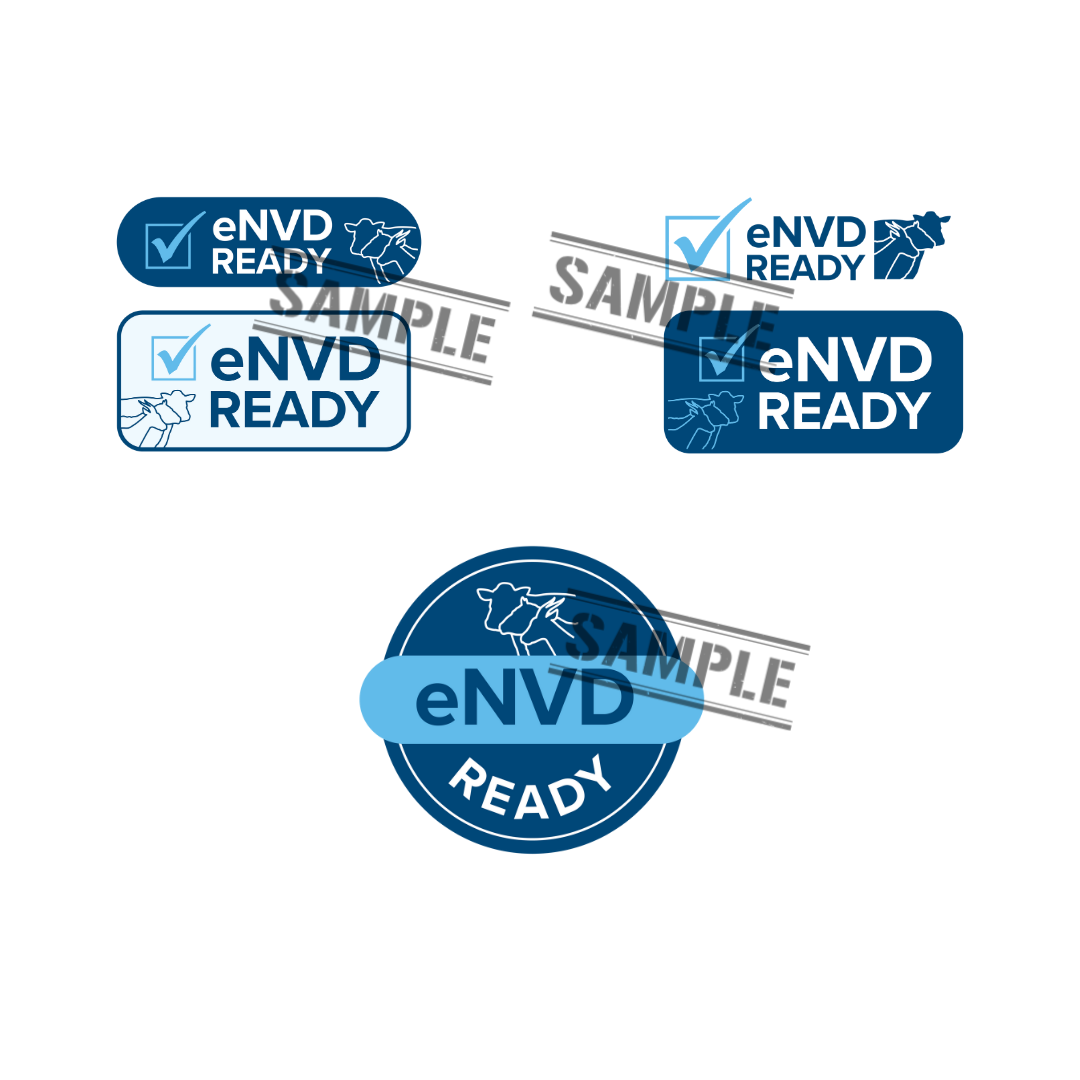National Vendor Declaration
(NVD)
|
|
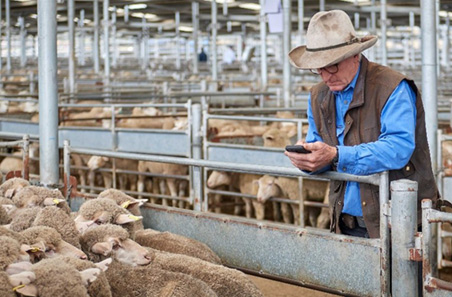
What can we help you with today?
To access NVDs and eNVDs, producers must be accredited with the Livestock Production Assurance (LPA) program.
LPA is the Australian red meat industry’s on-farm assurance program which underpins market access for our meat.
eNVDs are the fast, easy way to complete livestock consignments. They are free, more accurate than paper forms and ensure all livestock movement information is digitally captured.
Don’t have internet access? The problems that arise from having no internet access have been dealt with by the eNVD mobile app. Once the app has been downloaded in an internet service area, it is possible to share consignments with your transporter or receiver by using in-built QR code functionality.
NVDs and eNVDs are key to Australian red meat traceability and market access. They are also your pledge that the meat from your farm has been produced safely, ethically and meets biosecurity requirements.
When you sign your LPA NVD or eNVD, you are declaring your on-farm practices meet the seven requirements of the LPA program and ultimately customer expectations. This means you can stand by what you sell.
To access help guides to use the improved eNVD web-based system and mobile app, please click here.
Hear what these producers have to say about digital consignments:
Alistair Michael, sheep producer, SA on the benefits of eNVDs
Hannah Russell, cattle producer, NSW on the eNVD mobile app
eNVD web-based system:

You can access the eNVD web-based system on your computer or tablet. Consignments created on the web-based system can also be accessed on the eNVD mobile app.
Features include:
- Greater accessibility for supply chain representatives including transporters, agents, saleyards and other receivers to view, comment and share eNVDs
- Ability to attach health declarations and other statutory declarations which can be then viewed by others along the chain
- Template function makes it quick and easy to submit regular consignments
- eNVDs can’t get damaged, are easy to read and are easily filed
- Free to use and always available
eNVD mobile app:
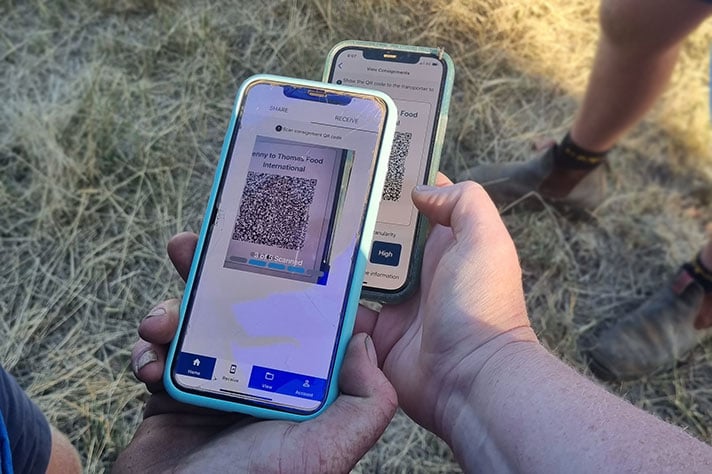
The eNVD Livestock Consignments (eNVD) app is a mobile solution for livestock consignments. The app overcomes connectivity issues by using QR codes to transfer consignment details from producer to transporter, saleyard, feedlot and to the processor, saving time and preventing errors.
Before using the app, producers are advised to check in with their transporter and receiver, including saleyards and agents, to ensure they are ready to receive digital consignments.
For those receivers who still require paper forms, eNVDs can be sent by SMS, email or if necessary be printed out and sent with your livestock.
Features include:
- Complete and transfer consignments offline from your mobile device to a transporter or receiver’s mobile device using QR codes when there is no internet service
- It is also possible to SMS, email or print the consignment if necessary
- Greater accessibility for supply chain representatives including transporters, agents, saleyards and other receivers to view, comment and share eNVDs
- Ability to attach health declarations and other statutory declarations which can be then viewed by others along the chain
- Template function makes it quick and easy to submit regular consignments
- Easy switch between consignments created on the web-based system and mobile app.
Download the app today. Search for 'eNVD Livestock Consignments' in the Google Play store (Android) or Apple store (iPhone), or click the links below:
Your myMLA account details
Need help?
Make sure your receiver is eNVD ready
We’d love your feedback
Georgina says the eNVD app is simpler to use
“The eNVD app is so much simpler than any other method that we've used for creating consignments. We have been using the eNVD web system for some time now, but I could only fill out my NVDs in the office, whereas the app means I can fill out the eNVD while waiting for a truck to come or literally while I’m talking to the transporter.
The eNVD app also allows me to be at another property and fill out and assign a consignment even if my farm manager has a consignment going on the same day. I can see straight away if that consignment is on the move or that he's still filling out the consignment details.
It took a little bit of time for us all to learn how to use the app, but I do hope that more of supply chain gets on board because once you get used to the app it’s so much easier.”
Georgina Gubbins
Cattle and Prime Lamb Producer
Heywood, Victoria
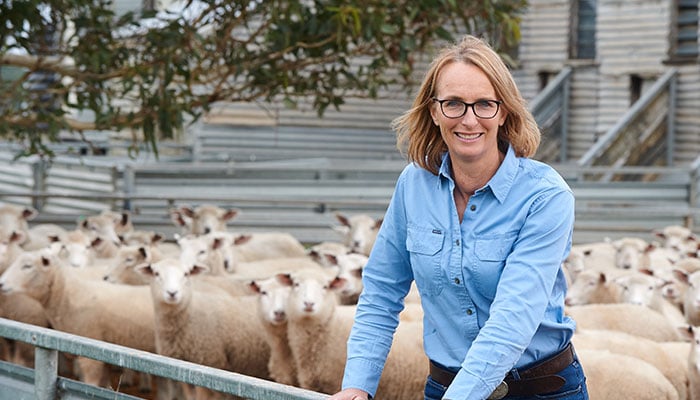
Jenny's switch to digital
"We have three entities within our business, compiling and completing our stock movements is my responsibility and the only time I rely on paper NVDs is in emergencies, and even then, that’s a rare occasion."
NSW sheep producer, Jenny Bradley, takes pride in the health and quality of her flock, with her accreditations and performance records covering Meat Standards Australia for her lamb sales and LAMBPLAN to support her seedstock rams.
"The business is also MSA-accredited, and the eNVDs just make it so easy. You can pre-populate all your information on the templates, for those repeat loads. Additionally, keeping track of records can be difficult with books and paper, so it really helps keep everything up-to-date and in the one spot."
"It’s easy, it’s efficient, and there’s nothing that would make me go back to paper permanently,” Jenny said.
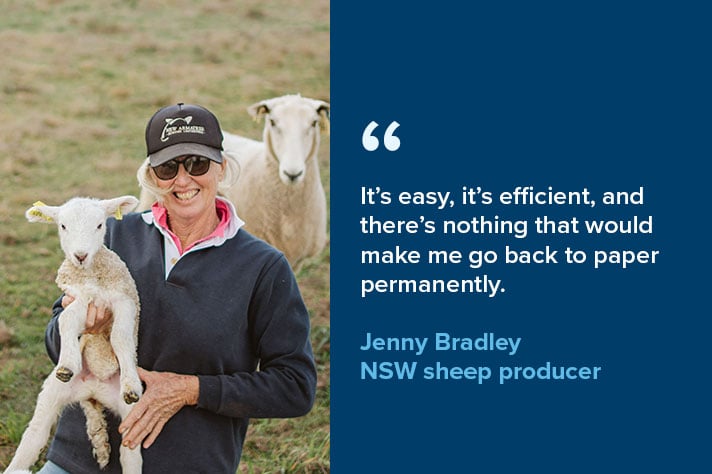
eNVD FAQs
The LPA electronic National Vendor Declaration (eNVD) system is a faster, easier way to complete livestock consignments. An LPA eNVD is the digital alternative to paper-based NVDs. The eNVD system is not just a place to fill out a NVD – it is a system for completing all consignment paperwork digitally including livestock assurance and health declarations.
The following forms are available using the eNVD:
- Livestock Production Assurance National Vendor Declaration (LPA NVD) for cattle, EU cattle, sheep and lamb, goats and bobby calves
- Meat Standards Australia (MSA) declaration
- National health declaration (cattle, sheep and goat)
- National Feedlot Accreditation Scheme (EU, delivery docket, form B).
When you select to create a new consignment within the eNVD system, you will be prompted to select the forms that you would like to include as part of your consignment. The forms that are visible to you are based on your accreditation.
Learn more about the eNVD web-based system and eNVD mobile app.
Increasingly, producers are using eNVD because it is:
- Faster, easier and more accurate than a paper NVD due to field validation, strengthening traceability and market access.
- Ensure the latest versions of vendor declarations are being used and so meet market requirements.
- Reduce time and duplication spent completing livestock assurance and health declarations.
- Reduce the cost of storing and retrieving historical NVDs for auditing, reporting and administrative purposes.
- Saves the industry time and money because it is instantly available online. Producers do not need to wait for new NVD books to arrive.
- Store all consignments in the one place where they are instantly available online, enabling stakeholders (including receivers) to log in and view eNVDs.
- Real-time acknowledgement of where livestock movements are taking place. In the event of a livestock standstill, regulators can use this information to find contaminated livestock faster, as well as understand the impact on other livestock in the area.
Login via myMLA and access eNVD within your linked LPA account/s.
Learn how to link your myMLA and create an eNVD here.
Yes, draft consignments can be created up to 28 days in advance of the actual stock movement taking place.
Once you have submitted the consignment you will still be able to edit and update the:
- Movement Date and Time
- Description of livestock (including the headcount)
- Transporter Details
- Consignment Viewers
If you made an error in any other section of the consignment, we recommend you duplicate the consignment, make the corrections, submit the new consignment and delete the old consignment.
You can edit any part of a consignment while it is still in draft in the eNVD system.
After you have submitted the consignment, you have seven (7) days after the entered movement date to update the:
- Movement Date and Time
- Description of livestock (including the headcount)
- Transporter Details
- Consignment Viewers
“Draft” and “Submitted” eNVDs can be deleted, but after seven (7) days past the movement date, they're marked as “Completed” and cannot be deleted.
If you need to correct an error in a submitted consignment that isn’t able to be updated like the destination address, duplicate the consignment to create a draft form, amend it, submit the new consignment and delete the original.
For paper NVDs, make corrections on the hard copy and sign each correction.
If you finish or update an eNVD offline, there are four ways to ensure all the records are updated on all devices:
- Login in to the eNVD App within Internet coverage
- Closing and reopening the eNVD app in coverage
- On the View page within the App - manually pulling down with your finger will also initiate a sync process with the backend
- If offline and then the device comes back online this should also start a sync process
To pass the consignment information onto the receiver – also called the consignee – a destination PIC is needed for the eNVD system to know where the consignment is going.
For example, to find the PIC of a saleyard, use the PIC search within the eNVD program, or the PIC register search within the NLIS database. Alternately, call or email the saleyard to ask for the PIC. When a consignment has been created once, recent locations will be shown in the eNVD and you can save the consignment as a template if it is a frequent movement.
ISC has an eNVD how-to guide which outlines the steps in completing an eNVD. Otherwise, for more information or assistance contact ISC Customer Service on 1800 683 111.
ISC is constantly reviewing and upgrading features of the eNVD to make it even more user friendly. In addition, users can provide suggestions and feedback on using the eNVD by emailing envd@integritysystems.com.au.
Feature updates currently under investigation include:
- Improvements to input of digital signatures.
- Offline access for regions with internet connectivity issues, such as a native mobile app, Bluetooth transfer of information or SMS at certain points where the NVD is being transferred to the next party.
- A paperless eNVD so no printing is required for completion.
- Improving the eNVD PIC search, which includes working with state agriculture departments.
Producers should communicate with their transporter and see if they are comfortable carrying a digital eNVD copy – this is a full copy of the consignment forms in PDF or similar – on their mobile device or in their truck. If not, then the best option is to print the eNVD and give them a printed copy to carry with them.
You also need to consider the people receiving it and whether they are set up to receive a digital copy. For example, if you are sending your livestock to an abattoir, you must be sure they are ready to receive that consignment electronically.
The eNVD needs to be completed by the driver before the transport begins and so if there is no connectivity at the yards, a printed copy will need to be used to capture the driver’s signature. The eNVD system allows producers to fill in as many details as they can in advance and then print/submit with the transporter section (Part B) left blank ready to be completed at the yards.
Digital eNVDs you create or receive are acceptable as a historical reference document when being audited so long as they are correct, complete and signed.
If you have printed an eNVD before completing it and have not updated the digital copy, then you need to keep the completed printed version. Otherwise it is acceptable to show an auditor eNVDs on your computer or mobile device during an audit.
Login via myMLA and access eNVD via your linked LPA account.The eNVD website is mobile-friendly which means the eNVD can be filled out on a smart phone.
Industry solution providers can be licensed by ISC to provide eNVDs from within their system. The following solution providers include eNVD in their software:
Solution providers wanting further details should contact ISC via envd@integritysystems.com.au
While ISC recommends using Google Chrome to access the eNVD, its mobile features are supported on Internet Explorer 11+, Microsoft Edge, Firefox and Safari.
NVD FAQs
The Goat NVD has been updated to remove reference to harvested rangeland goats and tag free movements.
The old goat NVD with version number G0720 is invalid from 1 July 2025 and has been replaced by version G0524.
Click below to find the current LPA NVD versions
NVD books are still available, however we suggest using eNVDs because they offer additional functionality and ensure livestock consignment data is captured digitally through the supply chain. This creates greater supply chain efficiency and ensures more correct information is captured.
If you still wish to seek NVD books, click below to find the current LPA NVD versions.
eNVD Ready
Is your business eNVD ready? Access this suite of eNVD Ready icons for your communications
Integrity Systems Company (ISC) is pleased to offer a suite of ‘eNVD ready’ icons for stakeholders in the Australian Red Meat Industry to help communicate to their clients and customers that their business is now 'eNVD ready' and accepting electronic National Vendor Declarations (eNVDs).
How to Access the Logos:
To access these logos, please reach out to us at communications@integritysystems.com.au with your request.
